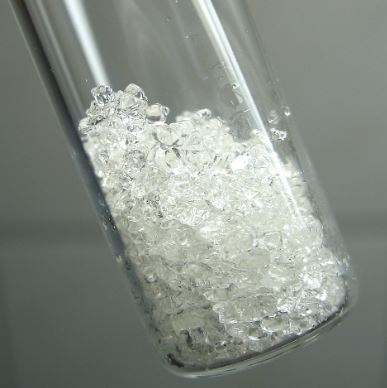PHENOL, crystallised, 250 g, bot.
Valid Article
PHENOL, crystallised
Definition
Crystallized powder used to prepare numerous reagents such as: Ziehl fuchsin or Pandy's reagent
Specifications
Technical specifications
- CAS N°: 108-95-2
- Formula: C6H6O
- Crystallized powder (if temperature >41°C: liquid)
- Quality: pure
Packaging & Labelling
Brown glass bottle
Transport Dangerous Goods
Depending of manufacturer
- UN1671
- Class: 6.1
- Packing group: II
- Proper shipping name: Phenol, solid
Instructions for use
Ziehl-Neelsen staining, Auramine O staining
Test of Pandy
Please consult the “Updated laboratory procedures, 2022” available online via the Laboratory working Group sharepoint page: Laboratory Procedures and Resources.
https://msfintl.sharepoint.com/sites/msfintlcommunities/LabWG/SitePages/Laboratory-Manual-page.aspx
For offline access, contact your laboratory advisor.
Precautions for Use
Packaging and international transportation are regulated.
Storage
- Tightly close the bottle after use
- No expiry date
Waste management
Substance with hazardous characteristics. Please contact your watsan referent for advice on proper disposal.
Detailed hazard and precautionary information can be found in the safety data sheet (SDS).
Classification EC Regulation N° 1272/2008
- Acute toxicity, Oral: Category 3, H301
- Acute toxicity, Inhalation: Category 3, H331
- Acute toxicity, Dermal: Category 3, H311
- Skin corrosion: Category 1B, H314
- Germ cell mutagenicity: Category 2, H341
- Specific target organ toxicity - repeated exposure: Category 2, H373
Signal Word
Danger
| H314 | Causes severe skin burns and eye damage. |
| H341 | Suspected of causing genetic defects (state route of exposure if it is conclusively proven that no other routes of exposure cause the hazard). |
| H373 | May cause damage to organs (or state all organs affected, if known) through prolonged or repeated exposure (state route of exposure if it is conclusively proven that no other routes of exposure cause the hazard). |
| H301 + H311 + H331 | Toxic if swallowed, in contact with skin or if inhaled |
| P280 | Wear protective gloves/protective clothing/eye protection/face protection |
| P301 + P330 + P331 | IF SWALLOWED: rinse mouth. Do NOT induce vomiting |
| P302 + P352 | IF ON SKIN: wash with plenty of soap and water |
| P305 + P351 + P338 | IF IN EYES: rinse cautiously with water for several minutes. If the victim wears contact lenses, remove them if possible. Keep rinsing |
| P309 + P311 | IF exposed or if you feel unwell: Call a POISON CENTER or doctor/physician. |
MSF requirements
The pure quality is necessary and sufficient for use in basic laboratories.


![[KMEDMHLA14D] (mod hospital lab) REAGENTS regulated transport](/web/image/product.template/572571/image_256/%5BKMEDMHLA14D%5D%20%28mod%20hospital%20lab%29%20REAGENTS%20regulated%20transport?unique=35f7fea)
![[ELAESCAE4--] SCALE, electronic (Kern EMB200-2), 0-200g, 0.01g](/web/image/product.template/572458/image_256/%5BELAESCAE4--%5D%20SCALE%2C%20electronic%20%28Kern%20EMB200-2%29%2C%200-200g%2C%200.01g?unique=b82bf39)